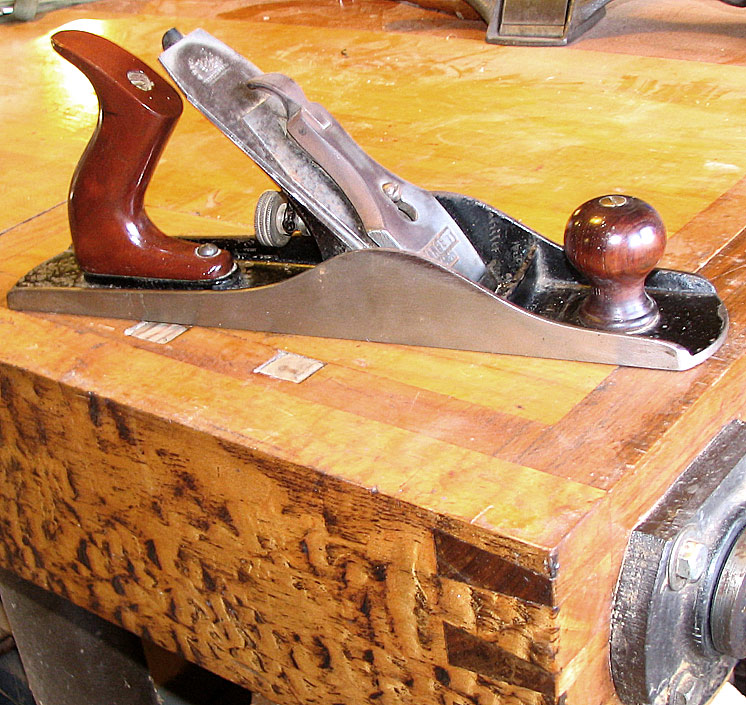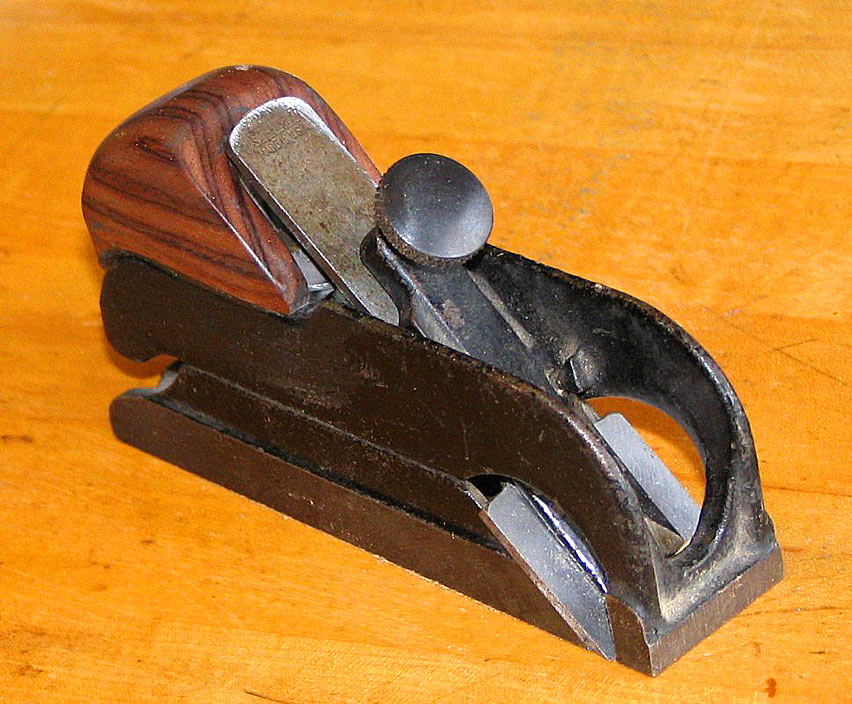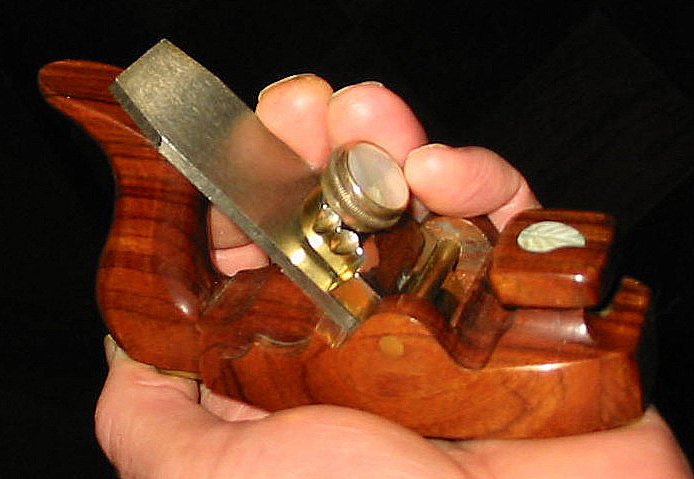I use planes for my woodworking. I can beat your time setting up and using a power tool on a short run job.
As issued these tools weren't bad. If you can't get a good vintage plane to work, you are a pretty poor craftsman.
But then, hotrod is a pretty nice word too.
Here are a few of mine. Every part of each one of them has been tuned and polished for maximum performance. They are bad MF's down in the trenches.

This is a Sargent VBM model jack plane. Sargent planes of this series have considerably thicker iron bodies than others. I carved this tote from local madrone wood (it looks prettier now since its aged more). It sports a Sandusky tapered blade. It takes some work on the chipbreaker to make these old blades work in an iron plane. (I'll show you in a minute)
But these blades are just about 1/4" thick at the business end! Massive
Bring it!
Here is a lowly Stanley #75. These sell for about 5 dollars anywhere. But they are not comfortable to use when you get them, and the blades they come with are pretty skimpy. I cut this blade from a large circular saw. I do that a lot. The hardness of old circular saw blades is just right for...... cutting wood! Whoda thunk? heh

Here is my forescrub plane. This was a wormeaten, really mangy old dog of a plane. So I opened the throat even wider and ground a wicked arc in the blade. The tote was bad and besides they made these things too small for my hand, working hard. So I carved a tote for it and even found a piece of wormy bay laurel for a new wedge.
This thing hogs huge deep chips, mostly across grain, with --very-- little effort.
She just plain bites!


Here is my Stanley #40 scrub. This old dog got an extra thick blade and an extra thick handmade steel lever cap. The narrowest of the scrubs, this bites the deepest chips of all. ~1/4" thick chips at a pass are nothing for this tool.

Here is my "Bedrock" #40. My friend Rob Brophy made it for me (gloat)

Here is my Stanley #21 smooth plane. This is small, the size of a #2. For this one I carved a body of Bolivian rosewood, and added another thick blade from an old wooden plane as well. Ridiculously thick in a tool this size.

Here is how you make the super thick blades work. The adjusters can't get reach though the blade to get hold of the chipbreaker unless you make them be able to. A couple of fitted lugs welded brazed or riveted on makes this possible.
If you are careful about the fit you can tune them to dead zero backlash while you are at it.


Arrrrrrrrrre you gonna take me home tonight?
Fat bottom girls you make the rockin world go round
Here is a VBM smoother. The totes made by factory are fair enough. But they are a bit skimpy down near the bottom. If you get to really workin hard with these tools, you will definitely react in time.
I think you need the narrow top portion to wrap your fingers around for steering finesse. Its only the bottom end that is lacking.
Cushion for the pushin, as they say.
So one I decided to do something about that.
Naturally, I call this my Fat Bottom Girl tote.
On top is a regular Stanley.
My girl in the middle and a Spiers infill plane below.
Look fairly similar from the side, don't they?

Here is where it counts.
I usually just put a stock plane in a person grip (eyes closed) and tell them to pretend pushing. I hold the plane a little so they get a feel for pushing.
Then I place the Fat Bottom in..................
I never had an unfavorable reaction.
Ever
Hello Foxy


yours Scott
